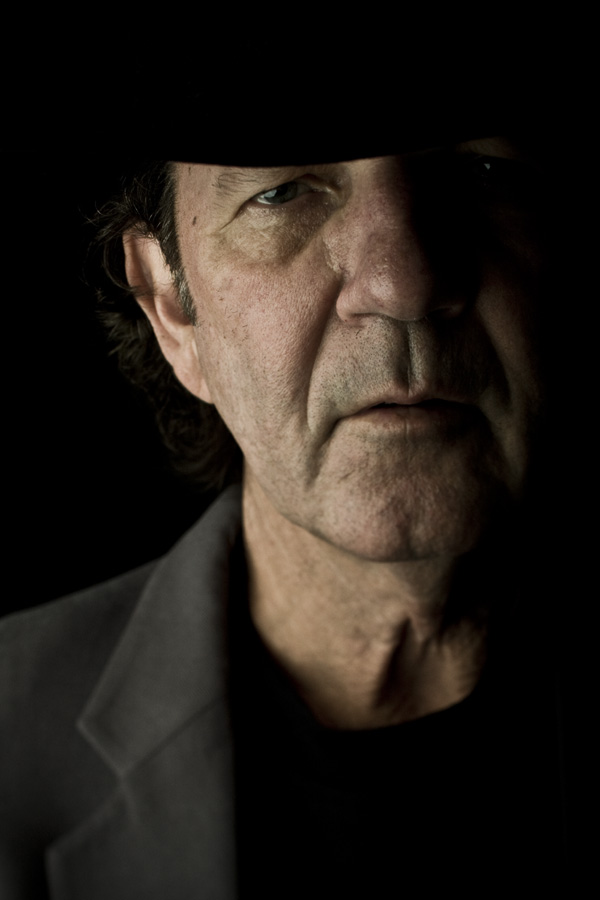Rock Music
Rock music in Louisiana grew out of several genres of roots music: blues, rhythm and blues, Cajun, and zydeco.

Courtesy of http://www.tonyjoewhite.com/
Tony Joe White. Wilkins, Black (Photographer)
Rock is a broad term that encompasses almost sixty years of performance at this writing, and a wide spectrum of styles. Much rock music in Louisiana is based on the state’s bedrock roots genres of blues, rhythm and blues (R&B), country/rockabilly/western swing, Cajun/zydeco, and even gospel. Two of rock’s most seminal pioneering artists, Fats Domino and Jerry Lee Lewis, were Louisianans, and their success spawned many imitators. Another rock pioneer, Chuck Berry, tellingly used Louisiana as the mythic setting for “Johnny B. Goode,” a song about a self-taught guitar hero. At the same time, a considerable amount of Louisiana rock reflects national trends or is entirely original, with no discernible folkloric influences. Heavy metal, punk rock, Beatles cover bands, KISS impersonators, and more can all be heard throughout the state, too.
Generally speaking, Louisiana rock music with indigenous connections has been more successful on both the artistic and commercial levels than the more generic expressions. There are several notable examples. In 1969, Tony Joe White emerged from Oak Grove in West Carroll Parish (via Nashville) with the regionally evocative rock song “Polk Salad Annie.” After White’s version climbed the pop charts in August 1969, it was rerecorded by Elvis Presley. Randy Newman is a California-based songwriter with strong family connections in New Orleans and a piano style reminiscent of Fats Domino and Jelly Roll Morton. Newman’s 1974 song “Louisiana 1927,” with its line “They’re trying to wash us away,” became an emotional anthem in the aftermath of hurricanes Katrina and Rita in 2005. The raw, rowdy “Suzie Q” by Shreveport singer Dale Hawkins—with an epic guitar solo by Shreveport’s James Burton—was an influential rock record when first released in 1957, and then became a 1960s hit when rerecorded by Creedence Clearwater Revival. Burton went on to become one of the most distinctive and easily recognized guitarists in pop/rock history.
A Baton Rouge-based band, John Fred and the Playboys, reached the vaunted number-one spot on the national pop charts in January 1968 with “Judy in Disguise (with Glasses).” As a spoof on The Beatles’ “Lucy in the Sky with Diamonds,” the song had obvious connections to the “British Invasion” sound, but its piano part and horn arrangements reflected the New Orleans-style R&B that singer John Fred Gourrier had been performing for years. In November 1966, singer Johnny Rivers reached number one with “Poor Side of Town”; Rivers evolved as a performer during his teenage years, which he spent living in Baton Rouge and performing all over southern Louisiana. He often shared the bill with such blues and R&B legends as Ernie K-Doe, Slim Harpo, and many others. Ernie K-Doe climbed the national charts with his 1961 song “Mother-in-Law,” while Slim Harpo did the same in 1966 with “Baby Scratch My Back,” a blues song that scored an unlikely hit in the pop music market of that time. Louisiana’s LeRoux, best known for “New Orleans Ladies,” emerged from Baton Rouge in the 1970s with its regionally evocative name.
In Lake Charles, crooner Phil Phillips reached the number-one spot in 1959 with the plaintive, soulful “Sea of Love.” A dozen years later, Phillips’s music was retroactively dubbed swamp pop. “Sea of Love” would reappear as the title of a popular 1980s movie, with a new rendition by a group called The Honeydrippers, led by singer Robert Plant of Led Zeppelin. In Lafayette, there was considerable interaction between rock and the related genres of Cajun music and zydeco. In 1958, singer Bobby Page (whose real name was Elwood Dugas) recorded a rock version of the Cajun two-step “hippitiyo” (also known as “Hip et Taïau”).
During the Cajun-music renaissance that began in the late 1970s, cultural activist musicians such as Zachary Richard used rock song structures to further their mission of French language advocacy. This approach, plus Richard’s exuberant performance style, earned him the moniker “The Cajun Mick Jagger.” In the 1980s, the Bluerunners typified this synthesis, which, in more recent years, has been assumed by guitarist and songwriter C. C. Adcock. In the 1970s, zydeco accordionist Clifton Chenier expanded his audience by performing in California with prominent rock guitarists Steve Miller and Elvin Bishop. The year 1986 saw this zydeco/rock exchange come full circle when the prominent pop-rock songwriter Paul Simon recorded a song for his Grammy-winning Graceland album with accompaniment by zydeco accordionist Rockin’ Dopsie. New Orleans, too, has a rich history of rock that interacts with roots styles. For example, the city’s most long-standing rock band, The Radiators, used to back up the great R&B guitarist Earl King, while several of its individual members played with Professor Longhair.
While many Louisiana rock bands feel the need to demonstrate some familiarity with the state’s traditional repertoire, such is not always the case. Long-standing bands such as Zebra and Lillian Axe, and new bands including Goatwhore, demonstrate the ongoing popularity of heavy metal. Generic “frat rock” has been expertly played by such nationally popular bands as Dash Rip Rock, Cowboy Mouth, and Better Than Ezra. Alt-rock bands including Shot Down in Ecuador Junior, Royal Fingerbowl, and the Continental Drifters have all enriched the local scene, at times incorporating local stylistic elements, as have the electronica artist Quintron and the eclectic New Orleans Bingo! Show. From its deepest roots to the latest permutations, Louisiana rock music consistently demonstrates prowess, passion, and great creativity.
